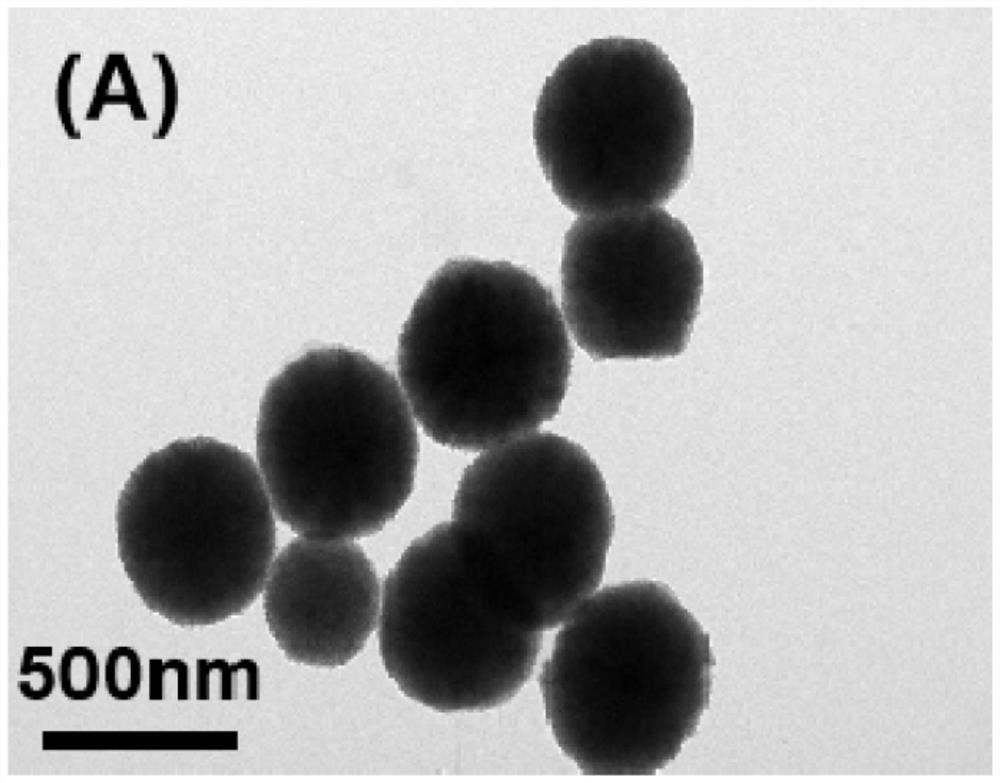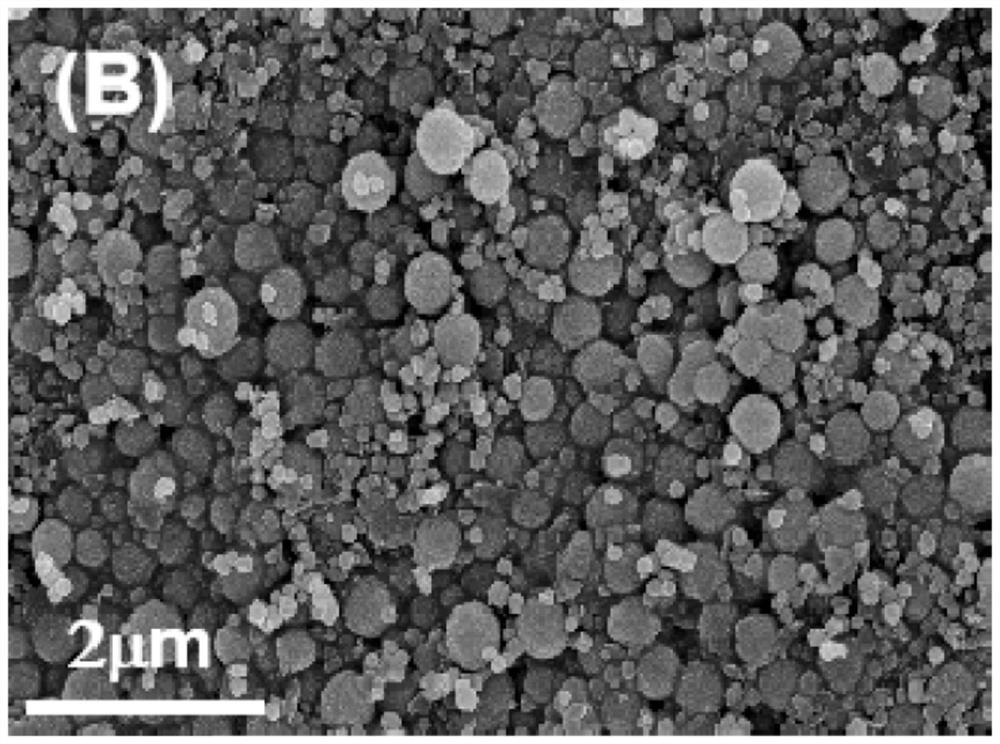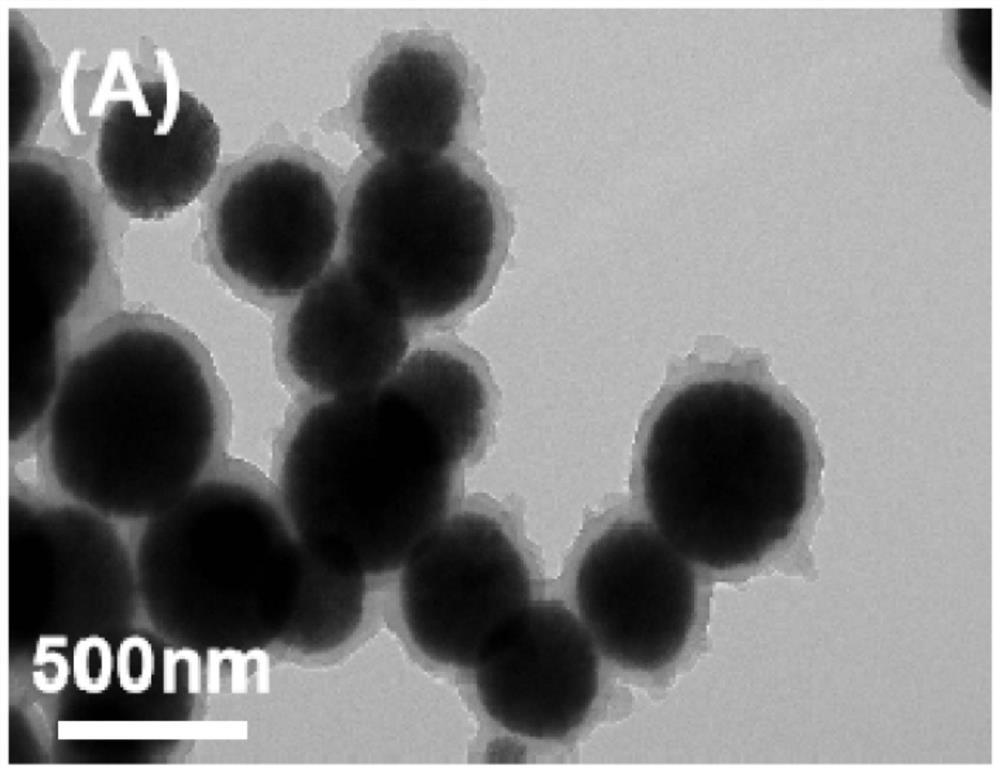Method for detecting norovirus
A virus and solution technology, applied in the field of norovirus detection, can solve the problems of cumbersome detection of multiple virus subtypes, high detection cost, high false negative rate, etc., and achieve the effect of good HT sealing effect, excellent conductivity, and enhanced electrical signal
- Summary
- Abstract
- Description
- Claims
- Application Information
AI Technical Summary
Problems solved by technology
Method used
Image
Examples
preparation example Construction
[0078] 6. The preparation method of the working electrode.
[0079] A glassy carbon electrode with a diameter of 3 mm was covered with Al 2 o 3 The polishing powder is polished into a mirror surface, and then ultrasonically cleaned in 50% nitric acid solution, 50% absolute ethanol, and ultrapure water; the electrode surface is dried with nitrogen, and 10-20 μL of AuNPs@BP at 0.5-5.0 mg / mL is added dropwise @Ti 3 C 2 MXene nanocomposite, air dry.
[0080] 7. Screen the optimal reaction conditions for the working electrode.
[0081] (1) Prepare 0.1-1mg / mL polypeptide (NoroBP) solution, take 10μL and drop it on the surface of the treated electrode, incubate at 4°C for 0-3h, wash the electrode with 0.2mol / L pH 7.0PBS 3 times, and wait for the electrode to dry After that, in 0.1mol / L KCl, 1mmol / LK 4 [Fe(CN) 6 ] / K 3 [Fe(CN) 6 ] solution for electrochemical impedance spectroscopy (EIS), while the corresponding cyclic voltammetry (CV) verification.
[0082] (2) Prepare 0.1-...
Embodiment 1
[0093] Example 1: ZnFe 2 o 4 @COF is prepared as follows:
[0094] (1) ZnFe 2 o 4 Preparation of nanoparticles: weigh ferric chloride hexahydrate (1.0 g) and anhydrous zinc chloride (0.5 g), dissolve them in ethylene glycol (60 mL) to form a transparent solution, then add sodium acetate (5.0 g) and poly Ethylene glycol 20000 (0.1 g). After the mixture was vigorously stirred for 2 h, it was transferred to a stainless steel autoclave (capacity 100 mL) and reacted at 200 ° C for 12 h. After the reaction was terminated, it was naturally cooled to room temperature to obtain a suspension containing black precipitate. The precipitate was washed several times with ethanol and water, and the black product was dried at 60° C. under vacuum for 6 h. Obtain powdered ZnFe 2 o 4 nanoparticles.
[0095] (2) Further synthesis of ZnFe 2 o 4 @COF: Take 1,3,5-tris(4-aminophenyl)benzene (TAPB,0.1g), terephthalaldehyde (TPA,0.06g) and ZnFe 2 o 4 (2.0g), dissolved with 50mL dimethyl sulf...
Embodiment 2
[0096] Embodiment 2: Preparation and Characterization of ZnFe 2 o 4 @COF's as follows:
[0097] (1) ZnFe 2 o 4Preparation of nanoparticles: weigh ferric chloride hexahydrate (3.0 g) and anhydrous zinc chloride (1.0 g), dissolve them in ethylene glycol (80 mL) to form a transparent solution, then add sodium acetate (2.0 g) and poly Ethylene glycol 20000 (0.1 g). After the mixture was vigorously stirred for 0.5 h, it was transferred to a stainless steel autoclave (capacity 100 mL) and reacted at 200 ° C for 24 h. After the reaction was terminated, it was naturally cooled to room temperature to obtain a suspension containing black precipitate. The precipitate was washed several times with ethanol and water, and the black product was dried at 60° C. under vacuum for 6 h. Obtain powdered ZnFe 2 o 4 nanoparticles. ZnFe 2 o 4 Nanoparticles figure 1 TEM and figure 2 SEM diagram.
[0098] (2) Further synthesis of ZnFe 2 o 4 @COF: Take 1,3,5-tris(4-aminophenyl)benzene (T...
PUM
 Login to View More
Login to View More Abstract
Description
Claims
Application Information
 Login to View More
Login to View More - R&D
- Intellectual Property
- Life Sciences
- Materials
- Tech Scout
- Unparalleled Data Quality
- Higher Quality Content
- 60% Fewer Hallucinations
Browse by: Latest US Patents, China's latest patents, Technical Efficacy Thesaurus, Application Domain, Technology Topic, Popular Technical Reports.
© 2025 PatSnap. All rights reserved.Legal|Privacy policy|Modern Slavery Act Transparency Statement|Sitemap|About US| Contact US: help@patsnap.com



